After using North Spore’s BoomRoom II over the last couple months, I have some thoughts on the design. To spoil it now, I really love this tent, and it’s much, much better than the first version they sold over the last few years. I had two of them and they were just fine, but the capacity upgrade with the BoomRoom II allowed me to replace two tents for just this one.
Why use a martha tent?
The two main reasons are space and efficiency. Growing gourmet mushrooms requires a consistent humid environment with lots of fresh air. Large-scale growers have full warehouses that are set to the right humidity and CO2 levels; hobbyists and small-scale growers are limited to their bedrooms, in which they know they’re not going to create 90% humidity climates!
So the consensus tools for us small growers are usually tubs or tents that you can create a micro-climate in. Tubs are great because they can hold a few bags and it doesn’t take much time and energy to get to the right environmental conditions to grow mushrooms.
Tents are great for someone who wants to grow a lot of mushrooms because in a 2x4 space, you now have the ability to fruit 20 to 30 bags at once.
Since I’m in the latter category of people, I’ve opted for a martha tent, and luckily my favorite culture supplier now released a custom tent set up that’s improved in every way on the old DIY tent that was be adapted from plant humidity tents.
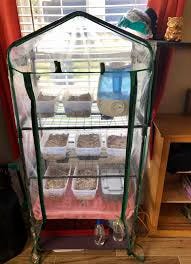
Let’s get into the details of what they’ve improved on:
Space and Capacity
The upgrade to 5 full racks is significant - I can now comfortably fit 20 fruiting blocks compared to the previous 12. With the height of the shelves, I can even stack a few more blocks on top, which helped me extend to about 26 blocks when I needed to. This alone made it a great upgrade.
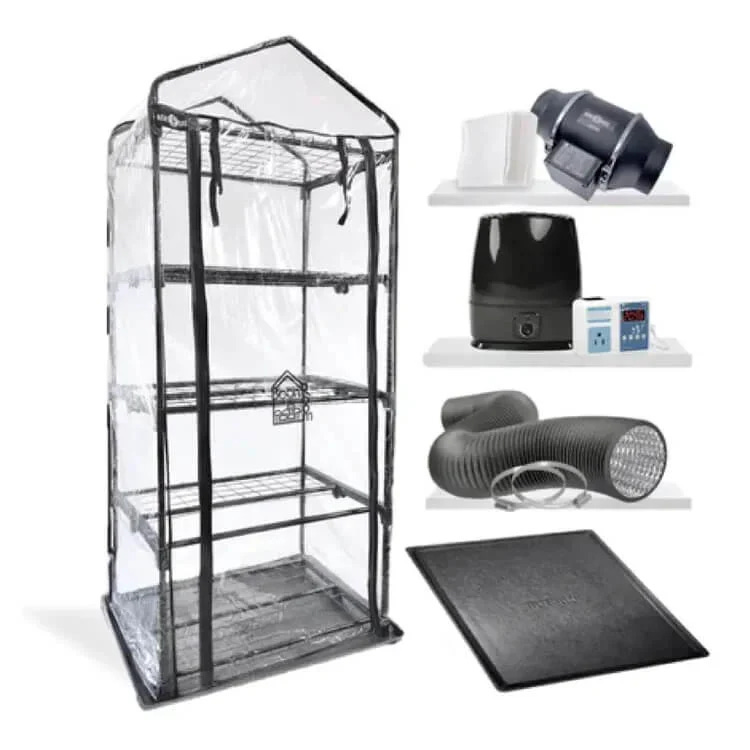
Design Improvements
The FAE fan and humidifier has been moved to the outside of the tent, which is completely the reason the tent can hold so many fruiting blocks now. Now I don’t even have to open up the tent to fill up the humidifier.
On the humidifier
Also, the black humidifiers they used before became SUPER ugly with mineral build up. Overall, my old BoomRoom tents look kind of gross because of mineral build up, and now the white humidifier makes it all look professional and hides any possibility of this, which could only happen if I spilled some water on the tent, rather than the humidifier spraying onto itself constantly in version one.
Next, the new humidifier holds about 4 gallons of water, compared to the old one that held maybe 1.5-2 gallons. The first version humidifier would only last up to a day and a half, and the new one lasts about 5 days.
This has been huge for me because I want to go camping or go out for the weekend, and the old humidifier always felt like a burden. I was going to make a DIY humidifier until North Spore came out with this upgrade.
There’s even more with this humidifier, which is great that North Spore thought of this stuff. The old humidifier, if it thought it was running out of water, would shut off and only start running if you restart the humidifier. Except the water sensor wasn’t even that good, so it would randomly shut off if water levels were relatively low, but not enough that it actually couldn’t run.
This caused times where I’ve set it and forgotten it, and I found out it shut itself off even though the reservoir was half-full. Not good.
Now, the humidifier will turn itself back on automatically if it senses that water has come back to the reservoir. So, for instance, it’s run out of water and stopped. All I do is pour water into it, and it just starts running again, without switching it off and back on.
This removes a previous headache when some babysitters accidentally filled the reservoir up on the first humidifier and never restarted it, leaving us with a bunch of dried mushrooms coming back home. My mistake in not being clear about this issue, but now that variable is gone.
On the FAE Fan
Now the FAE fan is installed outside and on the floor, rather than at the top, inside, and sticking out of the tent. I would have to access the fan by awkwardly reaching into the top shelf and fiddling with it until I got the filter replaced. This caused me to stretch out the plastic opening that the fan pokes out of.
The FAE fan has a platform so you can mount it to the wall instead of just on the floor, so I can prevent more spore and moisture build up by pointing the fan vertically. This is great, especially when I have to use higher percentage humidity settings that can cause water build up in the fan.
Other improvements
The new Spore Floor is now rubber instead of the huge plastic tray of the original that I now have in the shed because it can’t be stored around the house. If I have to move, this rubber tray can be rolled up.
The humidity controller is easier to program, which is nice. And the FAE fan has a speed controller that can be hung up on the loops that are outside the tent, along with the humidity controller.
Some issues with the BoomRoom II
While generally well-made, I did experience some issues. The vinyl is not perfectly durable, especially during set up, which is a tight fit between the frame and covering. I actually created a small hole during installation by trying to slide the tent over the frame.
Water tends to accumulate at the bottom, even more than the first BoomRoom, requiring a weekly towel that has caused me to not use the bottom shelf at times.
There's also some mineral buildup on the vinyl over time, though this can be managed with a vinegar-solution wipe down, which I wish North Spore would have spoken about with instructions on maintenance.
I did see one guy modify the piping of the humidifier with a 1.5" PVC pipe that helps reduce water build up by redirecting excess water back to the humidifier - a modification I'm planning to use very soon.
Conclusions
Overall, North Spore has made so many improvements over the original that it was hard not to immediately purchase it when they announced the upgrade.
But now that I have it, it’s hard to imagine going back to the old DIY-inspired set up they had before.
I remember when I got the first version of the tent, I thought “This is nice, but it feels like they just ordered all the parts I could have off of Amazon and sent it over to me.” It didn’t feel integrated, like a thoughtfully-made product usually does.
Now North Spore has done it, and it looks works great, with just a few more improvements to make it just about perfect as a plastic tent can be.
If you are in the market to upgrade your old tent with something better, this is it. And it will be cool to see DIYers improving on the design with found parts online. I think it’s going to be harder to emulate now that North Spore has adopted more custom parts like a tent with dedicated exhaust ports and a beautiful humidifier.
PS - A pro-tip. You’ll receive a small plastic sheath with your order, and the instructions will not let you know what it’s for. It’s for the interior bottom, and I didn’t know that until this review and looking at the photo! Sorry, this is only relevant to actual purchasers who are confused, but man I wish their guide actually told me, because it really is too tight of a fit for me to take it off confidently without damaging the tent more.





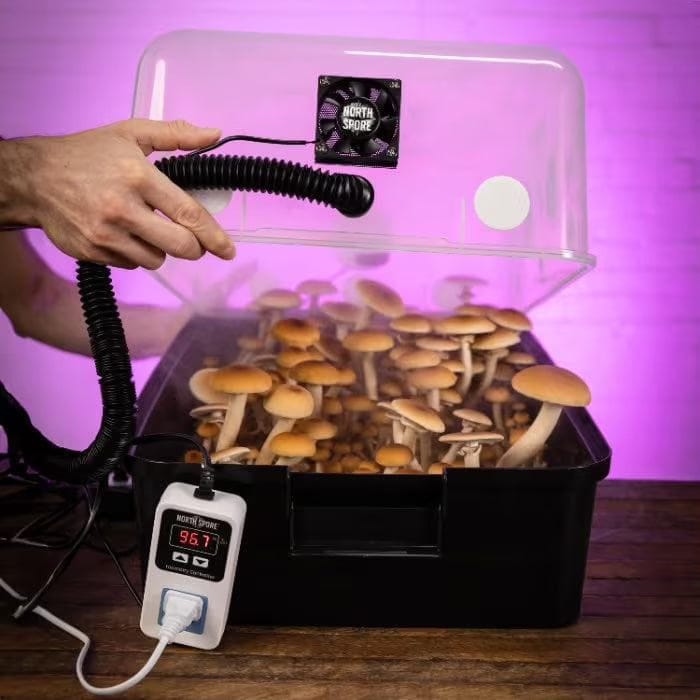
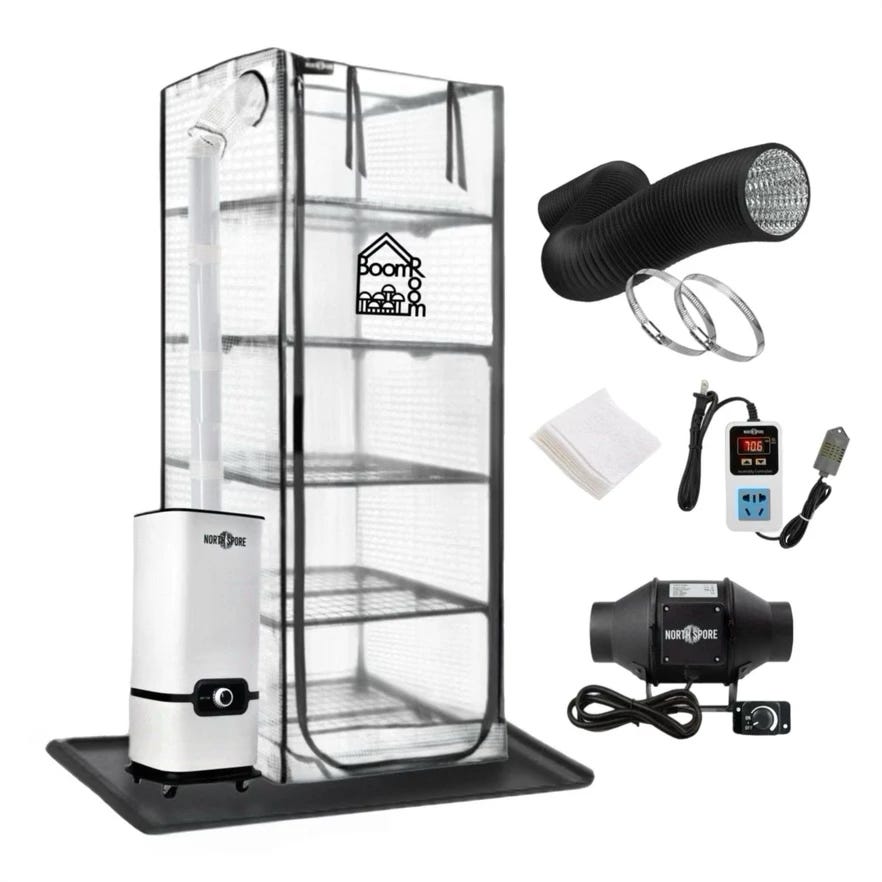
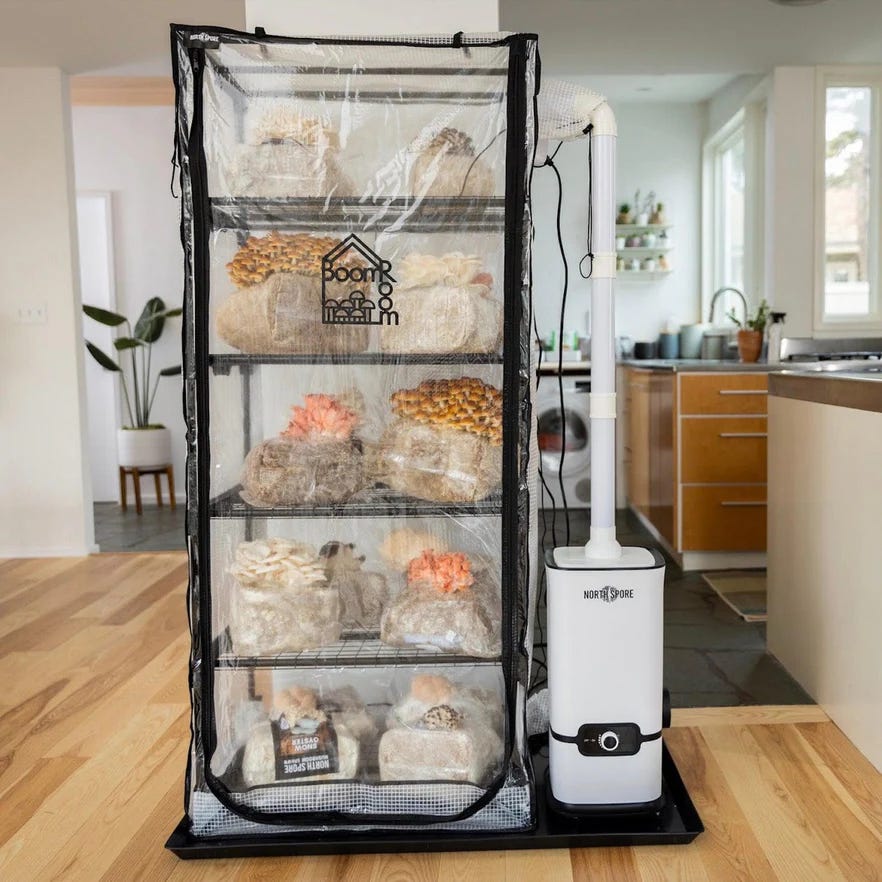









Share this post